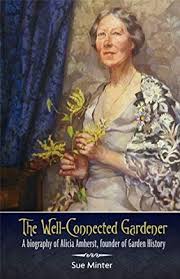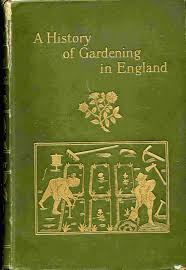 Sometimes I think it would be useful to have an alias, or maybe even several. A false name allows you to try on other lives and opinions without scaring the people who know you best. The practice has certainly become increasingly popular. People on social media do it all the time.
Sometimes I think it would be useful to have an alias, or maybe even several. A false name allows you to try on other lives and opinions without scaring the people who know you best. The practice has certainly become increasingly popular. People on social media do it all the time.
Alicia Amherst, who lived in the late nineteenth and early twentieth centuries, had several. Born into the English upper class in 1865, she was a gardener, garden designer, writer, historian, botanical illustrator and plant collector. Not as well known now as contemporaries like Gertrude Jekyll, she was extremely popular in her own time. One of the problems for historians is her aliases or noms de plume. Over the course of her lifetime, she published under four different names.
Probably her greatest success was The History of Gardening in England, published in 1895 under the name Alicia M.T. Amherst. This was a compact, but thorough look at the long history of horticulture in her native country. The book was an immediate hit, going into a second printing only one month after it was issued. It was also well reviewed. In fact, one 1896 review, in the journal Quarterly Review, praised the author in a narrative so verbose that it threatened to become book-length all by itself.
The success of The History of Gardening in England started Amherst on her garden writing career and clearly kept her busy with scholarly research and writing. Somewhat unusually for her time, she did not marry until 1898, when she was 33. Her marriage to Evelyn Cecil gave her another name under which to write, Mrs. Evelyn Cecil. This was a bit old-fashioned, because by Amherst’s time many women writers and artists identified themselves by first and last names, rather than as “Mrs. John Doe”. Still, as late as 1921, a revolutionary pink-cupped daffodil was christened ‘Mrs. R.O. Backhouse’. To this day it takes a bit of research to find the first and middle names of its namesake, a pioneering daffodil breeder.
Marriage and motherhood did not dampen Amherst’s output. As Mrs. Evelyn Cecil, she branched out into children’s gardening books, including Children and Gardens.
When not researching and writing books and articles, Alicia Amherst cultivated her own garden, choosing unusual species. This interest in plants began in childhood when her mother gave her a forty-foot garden bed to tend. Clearly that gift made a lasting impression. Later on she undertook botanizing expeditions for the Royal Botanic Garden at Kew, traveling to southern Africa, Sri Lanka, Australia, New Zealand and Canada. These travels led to more books, including Wildflowers of the Great Dominions of the British Empire. Published in 1935, the author’s name is listed as Lady Rockley. The change happened in 1934 when Amherst’s husband was elevated to the English peerage and became Baron Rockley of Lytchett. Her fourth name change occurred when Baron Rockley died, and she wrote under the name, Dowager Baroness Rockley. She held on to that name and published under it until her death in 1941.
Like many well-born women of her time, Amherst began sketching early on. By the time she was an adult, she was quite accomplished, creating botanical drawings as well as the illustrations for a book by her politician husband.
Her life was a busy one. In addition to all her other activities, she found time to advocate for the admission of women to horticultural training schools. When the Chelsea Physic Garden, a historic London botanical institution dating back to the seventeenth century, was in danger of closing, she worked to save it and served on the committee that oversaw it. Her various names live on at Chelsea, which houses her archives.
She was also honored in her lifetime, receiving an Order of the British Empire or OBE from King George V in 1918. She was the first woman to become a member of the Worshipful Company of Gardeners, an organization that began as a trade guild in 1345, gained a royal charter in 1605, and survives to this day, describing itself as a group of “…professionals and amateurs who are actively involved in the craft. All are united by a common bond of horticulture and gardens.”
Although it was slow in coming, Alicia Amherst was also the subject of a scholarly biography, The Well-Connected Gardener: A Biography of Alicia Amherst, Founder of Garden History”, published in 2003 by English author Sue Minter.
But getting back to the multiple name issue–Alicia Amherst’s birth name lives on, not only in her early publications, but in a graceful plant, Hebe ‘Alicia Amherst’. Hebe is a genus of evergreen shrubs, native to New Zealand, one of the places where Amherst botanized. It is not cold hardy, but boasts ovate green leaves and dark purple flowerheads that bloom in summer. It is a fitting perennial tribute to a trailblazing horticulturist.
